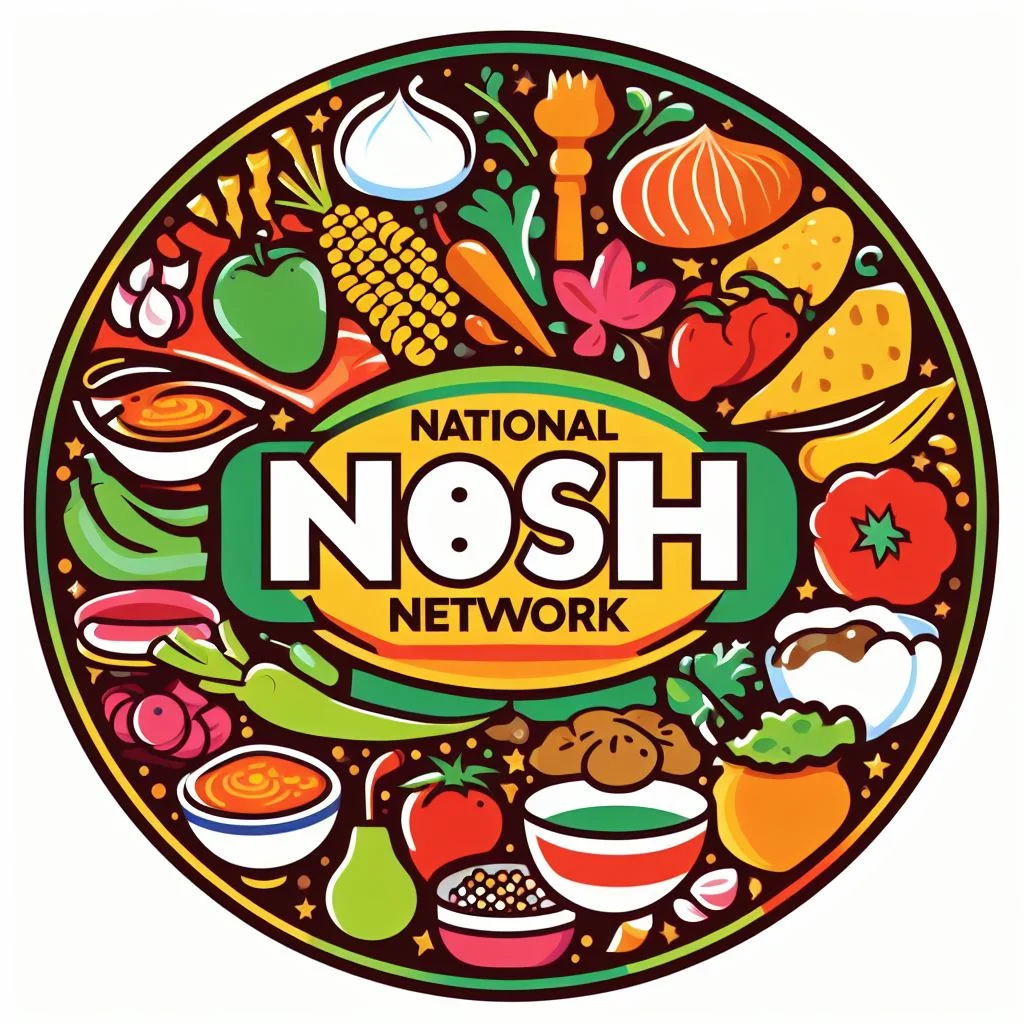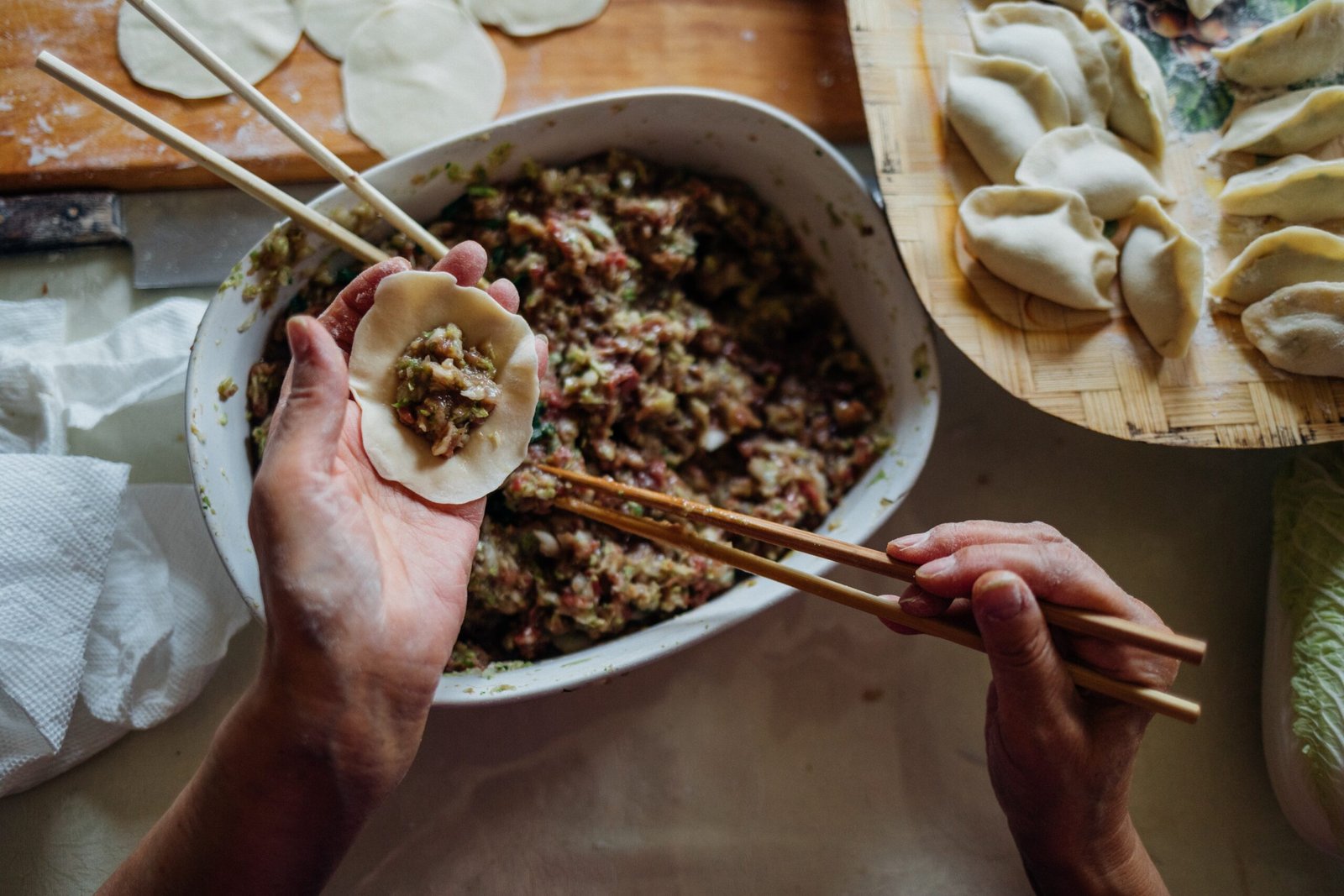Take Me to the Recipes
Have you ever wondered why Chinese food tastes SO different across the country? It’s not just regional specialties!
Intrigued by the fiery spice of Sichuan dishes or curious about the delicate flavors of Cantonese cuisine? We’ve got you covered! Not only will you discover the secrets behind these regional specialties.
This article dives into the crazy history, geography, and even climate that shaped Chinese cuisine. Plus, over 100 authentic recipes to blow your taste buds away Get ready to become a Chinese food MASTER
Take Me to the Recipes
Chinese Food – Key Takeaways
- Chinese food is rooted deeply in the nation’s history and traditions.
- The vast country has multiple culinary styles, ranging from the spicy dishes of Sichuan to the sweeter palates of Canton.
- Ingredients used are often locally sourced, reflecting the country’s diverse climate and topography.
- Many Chinese dishes are enriched with symbolic meanings, often associated with luck, prosperity, and health.
- Techniques like steaming, stir-frying, and roasting are commonly employed in Chinese cooking.
- Presentation and the balance of flavors are crucial aspects of the culinary philosophy.
Take Me to The Recipes
Where is China?

China is situated in eastern Asia on the western shore of the Pacific Ocean, with an area of 9.6 million square kilometers. China’s continental coastline extends for about 18,000 kilometers, and its vast sea surface is studded with more than 5,000 islands.


Index to the Contents
- Take Me to the Recipes
- More Articles
- 24 Chinese Beef Recipes: Culinary Marvels Unveiled in 24 Dishes!
- 39 Delicious Chinese Pork Recipes: Magic Unleashed in 39 Amazing Dishes!
- Explore 41 additional Irresistibly Delicious Chinese Dessert Recipes That Will Leave You Craving More!
- 48 Mouthwatering Chinese Vegan Food Recipes
- 10 Fascinating Facts about China
- China’s History and the Effect It Has Had on the Cuisine
- How China’s Climate and Geography Have Influenced the Cuisine
- Understanding the Essence of Chinese Food
- Chinese Culinary Traditions
- Exploring China’s Ingredients
- Mastering Chinese Cuisine Cooking Techniques
- Traditional Chinese Food
- Exploring Chinese Street Food
- The Most Popular the Chinese Recipes
- What are the Health Implications of Chinese Food?
- China’s National Dish
- Chinese Recipes you can try in your own kitchen
- Conclusion
- FAQ’s
You may also be interested in the following articles
- 39 Amazing Chinese Pork Dishes!
- 24 Delicious Beef Dishes
- 48 Mouthwatering Chinese Vegan Food Recipes
- 41 Irresistible Sweet Delights
- North and South American Cuisine – A Culinary Expedition
- Europe Cuisine: Savor the Continent’s Best Culinary Secrets!
- African Cuisine: Discover the Bold Flavors & Global Charm!
- Asian Cuisine Unlock its Secrets – Taste, Health & Global Influence!
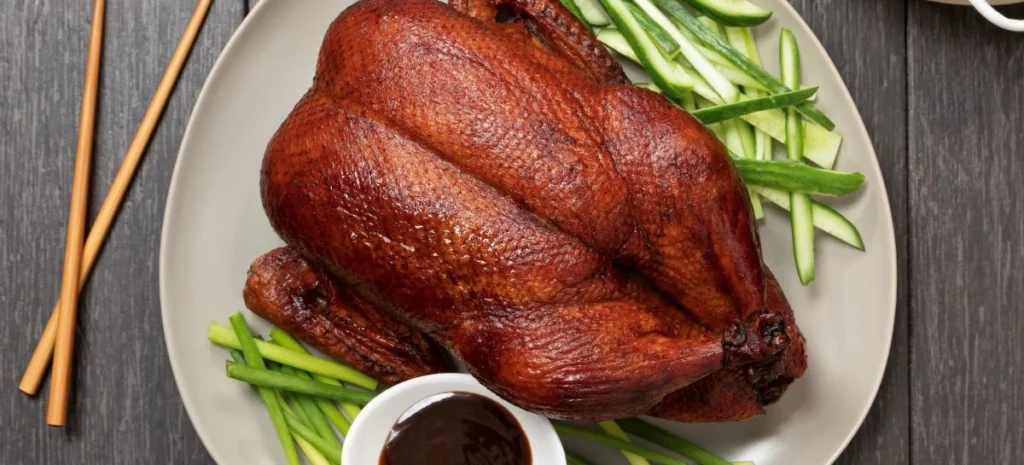

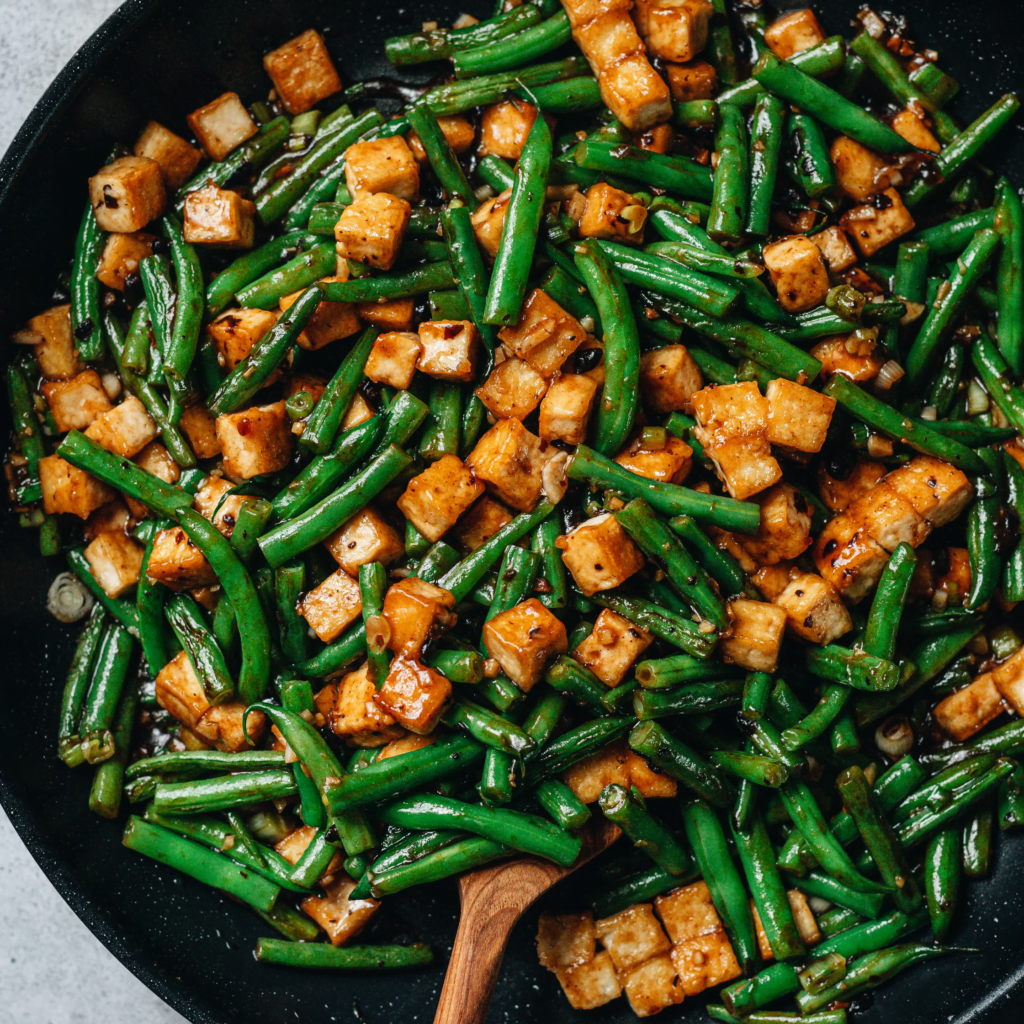


Savor iconic Chinese Food – Click on each tantalizing picture to open up the Recipe
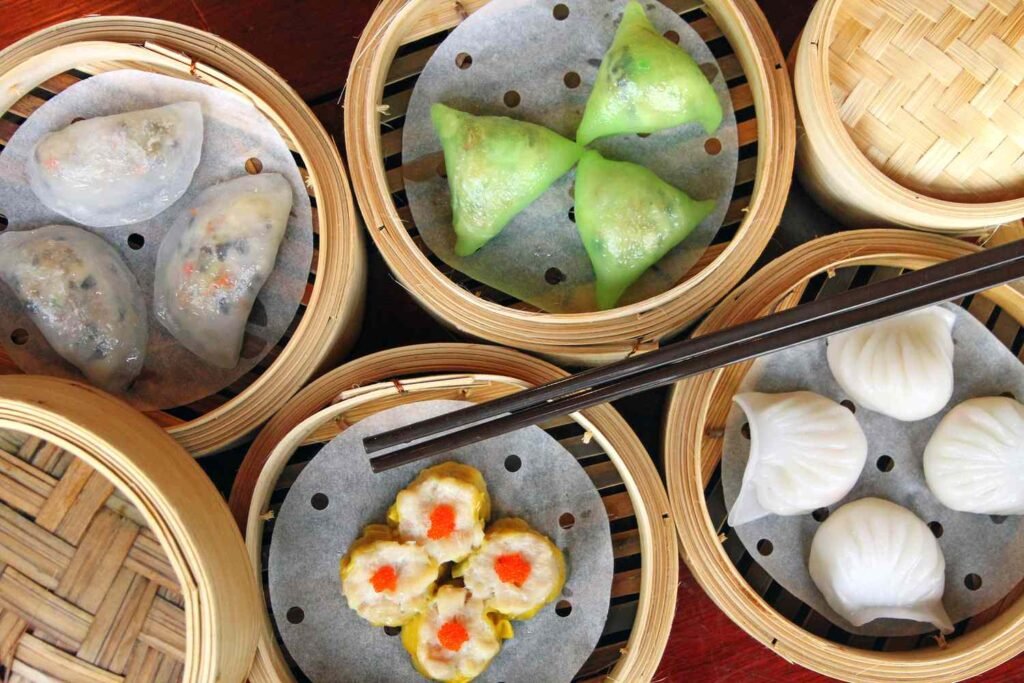
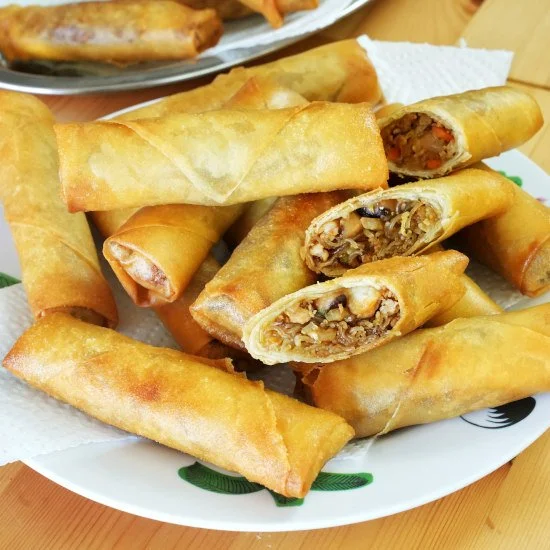
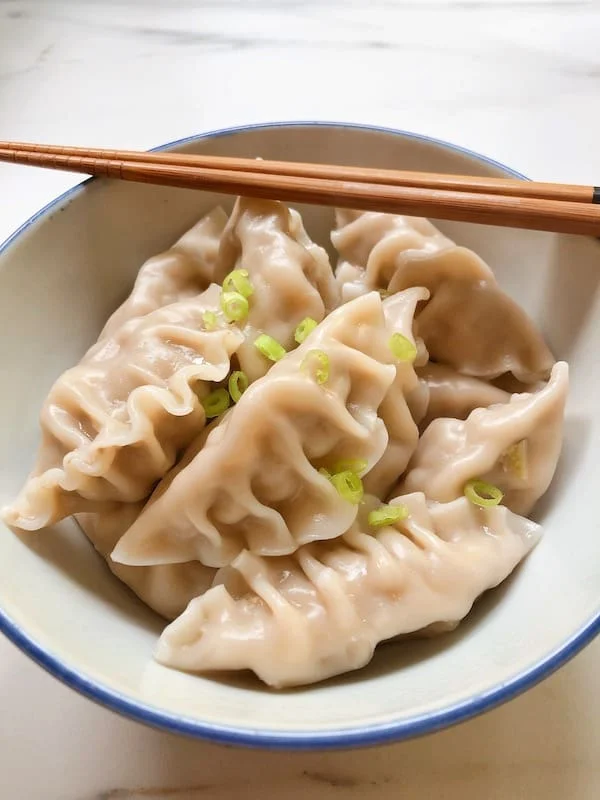
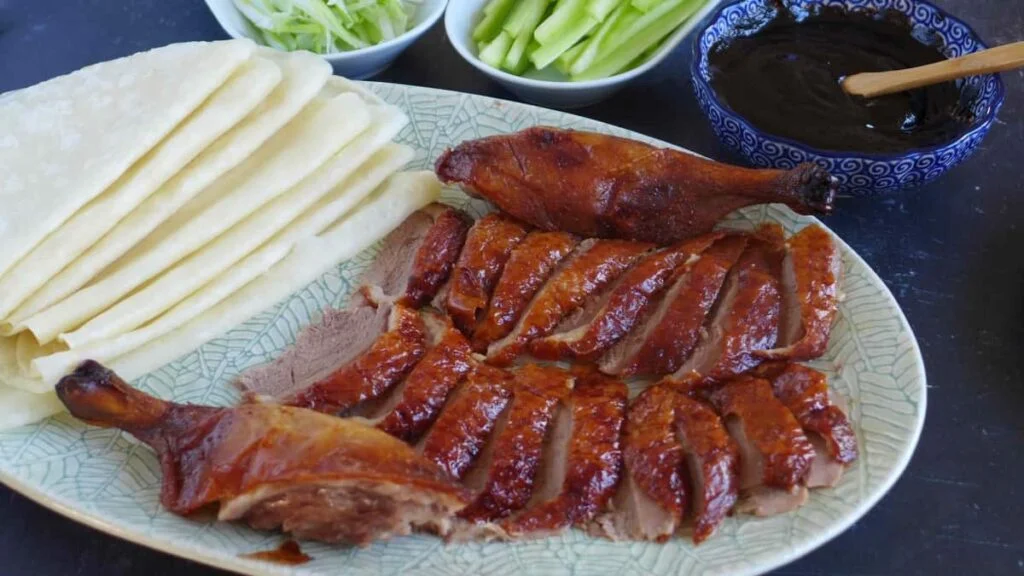
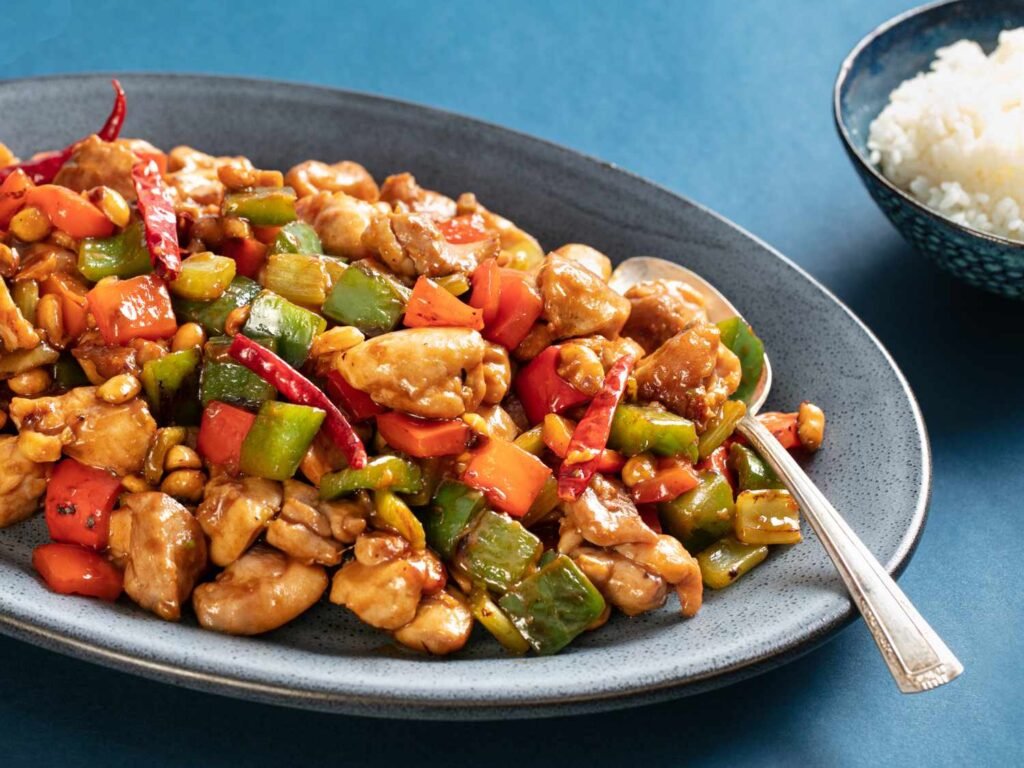
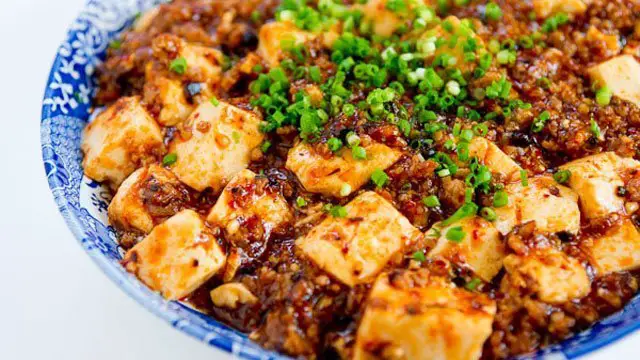
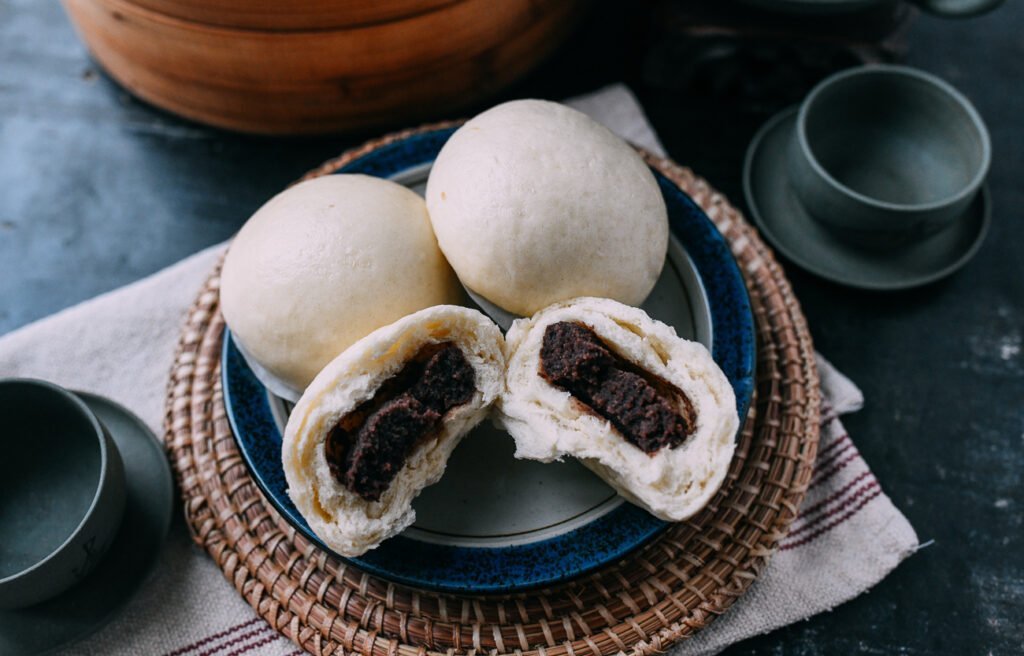
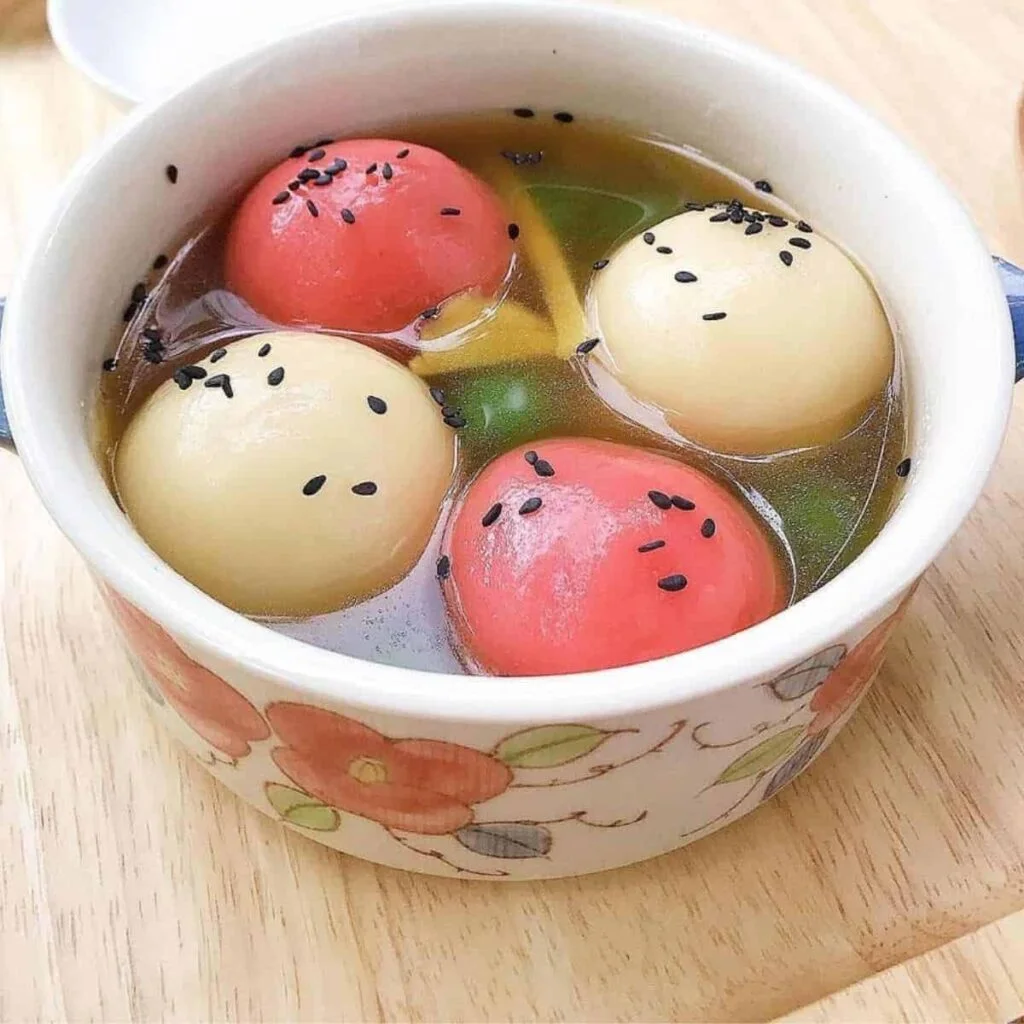
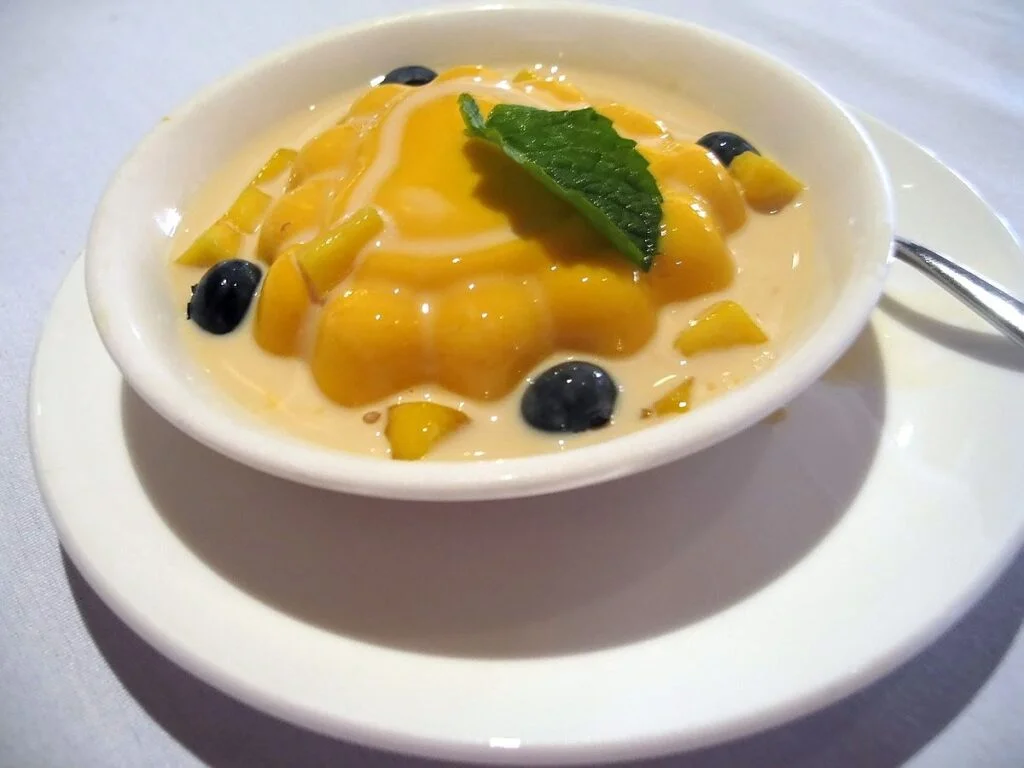
Thats not All!! – Check out even more Chinese Recipes Below





- 24 Chinese Beef Recipes: Culinary Marvels Unveiled in 24 Dishes!
- 39 Delicious Chinese Pork Recipes: Magic Unleashed in 39 Amazing Dishes!
- Explore 41 additional Irresistibly Delicious Chinese Dessert Recipes That Will Leave You Craving More!
- 48 Mouthwatering Chinese Vegan Food Recipes
10 Fascinating Facts about China

Hey! Did you know China has some wild laws and customs? Check these out:
There’s no Netflix
Forget Netflix and chill! Streaming services like Netflix are kind of restricted in China.
Most Chinese Cities ban Fireworks!

Gotta love fresh air, but in China firecrackers are BANNED in most major cities to combat air pollution.
China has the most Internet Traffic
China has more internet users than ANY other country, but many popular sites like Facebook and YouTube are blocked.
Pandas are Adored

Pandas are China’s national treasure, but guess what? Technically, every panda outside China is just on loan!
Mandatory Sleep Times
Nap time for everyone! In some kindergartens, there’s a mandatory nap time even for the teachers!
Jaywalking is Forbidden

Speaking of rules, jaywalking in China can come with a hefty fine. Better stick to the crosswalks! ♀️
Dogs are Regulated
Want to own a pet dog? In some Chinese cities, there are restrictions on the size of dog breeds you can own.
China Takes Other Countries Junk

Recycling pro-tip: China actually IMPORTS trash from other countries to fuel their recycling industry! ♻️
Superstitions Abound
Superstitions run deep! The number four is considered unlucky in China because the pronunciation sounds similar to the word for “death.” ☠️
China is in a time of its Own
China has its own time zone, but the country is MASSIVE! This means western China can have a completely different sunset than the east coast, even though they’re on the same time.
China’s History and the Effect It Has Had on the Cuisine

Chinese cuisine isn’t just a collection of delicious dishes; it’s a captivating story told on a plate. Over millennia, each dynasty and era has left its mark, creating a rich tapestry of flavors and traditions.
Buckle up for a delicious adventure through time as we explore how Chinese history shaped its world-renowned gastronomy!
Ancient Foundations (Prehistoric – 221 BC)
Our journey begins in the fertile cradle of the Yangtze River Valley. Here, the ancient Chinese cultivated rice, laying the foundation for their culinary future. This reliance on rice as a staple continues to this day.
It wasn’t just about rice, though! Early Chinese were also fermentation pioneers, developing essential ingredients like soy sauce, vinegar, and pickled vegetables, all of which continue to be cornerstones of Chinese cooking. And let’s not forget the wok, that versatile marvel of culinary engineering, which emerged during this period.
The Imperial Dynasties (221 BC – 1911 AD)
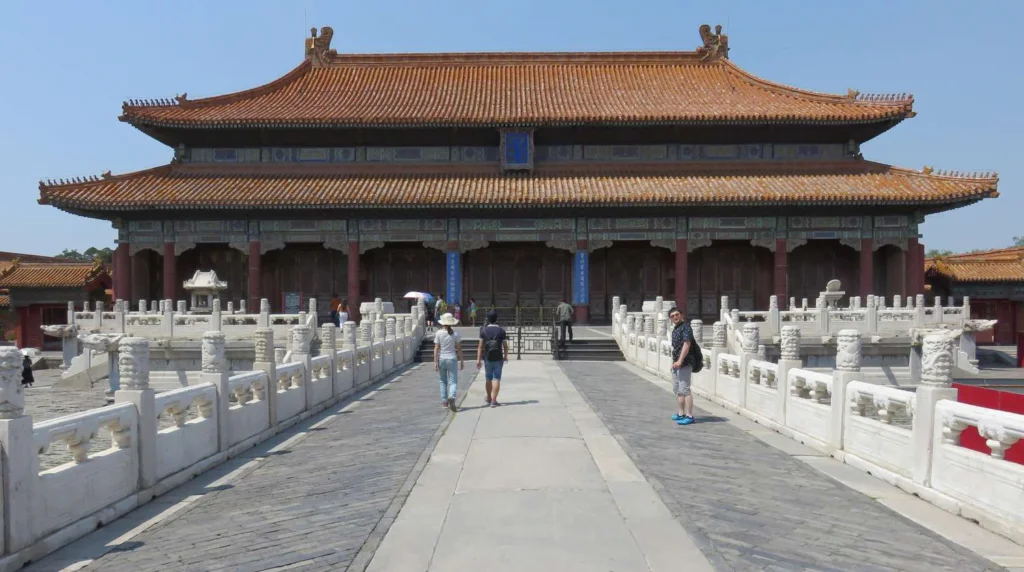
Fast forward to the rise of the great dynasties, and Chinese cuisine truly flourished.
- Han Dynasty (206 BC – 220 AD): The Silk Road opened its doors, ushering in an era of cultural exchange. Spices like cumin and coriander, along with exotic ingredients like grapes and walnuts, added a new dimension to Chinese cooking. This era also saw the rise of hand-pulled noodles, a favorite that persists to this day. And let’s not forget tea – it was during the Han Dynasty that this beverage became an integral part of Chinese life.
- Tang Dynasty (618 – 907 AD): Considered the golden age of Chinese cuisine, the Tang Dynasty saw elaborate feasts and banquets showcasing the artistry of Chinese chefs. Dumplings (jiaozi), symbolizing wealth and prosperity, became a staple during the Lunar New Year celebrations.
- Song Dynasty (960 – 1279 AD): The Song Dynasty was a period of culinary innovation. Stir-frying, steaming, and braising techniques became commonplace, and tea houses introduced the delightful world of dim sum, bite-sized delicacies perfect for enjoying alongside a cup of tea.
- Ming Dynasty (1368 – 1644 AD): Ming China’s maritime prowess opened the door to global exchange. Chili peppers, peanuts, and sweet potatoes were all introduced during this era, forever changing the flavor profile of Chinese cuisine. This period also saw the evolution of chopsticks as the primary eating utensil, and the birth of the iconic Peking duck.
The Modern Era (1912 – Present)

- The Republic of China (1912 – 1949): Western influences began to creep in, with Western-style bakeries and cafes appearing in major cities. Soybeans also took center stage, with soy products gaining prominence in Chinese cuisine.
- The People’s Republic of China (1949 – Present): The Cultural Revolution posed challenges to traditional cuisine, but China’s culinary landscape remained vibrant. Regional specialties continued to thrive, with Sichuan cuisine’s fiery dishes gaining national and international fame.
A Look Ahead: Contemporary Trends
Today, Chinese cuisine is a dynamic force, constantly adapting and evolving. Health considerations are increasingly important, with chefs balancing tradition with modern dietary needs. Street food scenes in cities like Beijing and Shanghai offer a vibrant exploration of local flavors, while innovative fusion cuisine takes traditional ingredients and techniques on a journey around the world.
From the ancient rice paddies to the bustling night markets, Chinese cuisine is a living testament to the country’s rich history and enduring cultural legacy. So, the next time you savor a plate of dumplings or a bowl of Sichuan noodles, remember – you’re not just enjoying a delicious meal; you’re taking a bite out of Chinese history!
References
How China’s Climate and Geography Have Influenced the Cuisine

China’s vast territory isn’t just a geographical marvel; it’s a playground for culinary creativity. The country’s diverse geography, climate, and regional variations have all conspired to create a breathtaking tapestry of flavors.
Let’s embark on a delicious journey to explore how these factors shape the distinct cuisines across different regions of China.
Geography: Setting the Stage for Culinary Diversity
China’s sheer size, the fourth largest in the world, is a key player in its rich food culture. Imagine towering mountains, sprawling plains, fertile river valleys, and everything in between.
Each region offers unique conditions for agriculture and food production, leading to a dazzling diversity of ingredients.
Regional Dishes: A Taste of Place
Northeast Cuisine

In the frigid embrace of the Northeast Plain, life revolves around enduring the harsh winters. This translates to a cuisine focused on hearty, warming dishes.
Think hearty stews, dumplings filled with comforting ingredients, and a heavy reliance on cold-resistant crops like potatoes.
Guangdong (Cantonese) Cuisine

Descend south to the balmy shores of Guangdong province, where the subtropical climate and proximity to the mighty Yangtze River create ideal growing conditions for rice, a staple grain.
Here, Cantonese cuisine reigns supreme, emphasizing fresh, light flavors and delicate cooking techniques. Dim sum, a delightful parade of bite-sized delicacies, fresh seafood, and stir-fried dishes are all hallmarks of this culinary style.
Sichuan Cuisine

Venture inland to the mountainous terrains of Sichuan province, where the humid climate and fertile soil nurture a vibrant array of ingredients. Sichuan cuisine is renowned for its bold and fiery flavors, achieved through the liberal use of Sichuan peppercorns, chili peppers, and garlic.
Hotpot, a communal dining experience where diners cook their own ingredients in a simmering pot of broth, and Mapo tofu, a dish that’s both spicy and satisfying, are iconic examples of Sichuan’s culinary prowess.
Xinjiang Cuisine

Travel even further west to Xinjiang, a region bordering Central Asia. Here, the arid climate and vast deserts have shaped a unique cuisine that blends Chinese and Central Asian influences. Lamb, a hearty protein source well-suited to the harsh environment, features prominently, along with flatbreads and aromatic spices like cumin.
Signature dishes include lamb kebabs and hand-pulled noodles, a testament to the region’s nomadic past.
Climate’s Influence: A North-South, East-West Divide
Beyond individual regions, China’s cuisine can also be broadly categorized by the temperature and rainfall patterns across the country.
- North vs. South: The colder winters of Northern China have led to a focus on heartier, warming foods. Wheat takes center stage here, appearing in the form of noodles and dumplings. Southern China’s subtropical climate, on the other hand, favors rice cultivation, seafood dishes that utilize the abundant coastal resources, and tropical fruits that flourish in the warm and humid conditions.
- East vs. West: Eastern coastal regions, with their easy access to the sea, naturally emphasize seafood in their cuisine. Western provinces, like Sichuan and Xinjiang, boast bold flavors and liberal use of spices, likely influenced by their unique climates and historical trade routes.
A Culinary Symphony
China’s diverse cuisine is a harmonious melody played by geography, climate, and regional traditions. Each region’s culinary heritage reflects its distinct environment and historical context, offering a delicious window into the soul of China.
So, the next time you savor a steaming bowl of Sichuan noodles or a delicate Cantonese dumpling, remember – you’re not just indulging your taste buds; you’re embarking on a delicious journey through the heart of China.
References
- The differences in Chinese food culture caused by geography
- Why China has so many different regional cuisines – geography, climate variation, distance, localized crops and livestock
- Map of the Week: The Geography of Chinese Cuisine
- Geography and Similarity of Regional Cuisines in China
- Taste and place: How cuisine affects geographical identity
Understanding the Essence of Chinese Food

Chinese food is not just a mere collection of dishes or cooking techniques, but rather an intricate tapestry woven with history, culture, philosophy, and regional intricacies. It’s a reflection of China’s vast landscapes, from its sprawling rice fields to bustling metropolises, and the thousands of years of civilization that have enriched the nation.
At its core, Chinese cooking thrives on the philosophy of harmony and balance, often depicted through the concept of yin and yang. This principle is evident in the interplay of flavors, textures, and even the temperature of dishes.
Sweet is balanced with sour, crispy complements soft, and hot is paired with cold. This symphony of contrasts creates dishes that are complex yet balanced and tantalizing yet comforting.
The Different Regions Play a Role
Regionality plays a significant role in the diversity of Chinese food. From the fiery spices of Sichuan, the umami-rich flavors of Cantonese dishes, to the subtle and aromatic seasonings of the Jiangsu region, each area has its own unique culinary identity, shaped by its climate, geography, and history.
Ingredients are meticulously chosen based on freshness and quality, and a lot of emphasis is placed on seasonality, ensuring that each dish captures the essence of a particular time of the year.
Moreover, Chinese food is deeply symbolic. Dishes are often imbued with meaning, many of which revolve around themes of luck, prosperity, longevity, and unity. For instance, dumplings (jiaozi) are reminiscent of ancient gold ingots, symbolizing prosperity.
Meanwhile, long noodles represent a long life, making them a favorite during birthdays.
Techniques Vary
Techniques are another cornerstone. From stir-frying, which requires a swift hand and high heat to seal in flavors, to the slow, gentle simmering of broths to extract depth, every method serves a purpose.
The same ingredient can be transformed through various techniques, showcasing the cuisine’s versatility.
Finally, the essence of Chinese cuisine is incomplete without mentioning its communal nature. Meals are often shared, with dishes placed at the center, fostering a sense of togetherness. It’s not just about feeding the body, but also nourishing the soul and strengthening bonds.
In essence, to understand Chinese cuisine is to delve deep into the heart of China’s culture, history, and values. It’s a journey that surprises, delights, and educates, making every bite a step deeper into the rich tapestry that is China.
What is the National Dish of China?

When it comes to Chinese food, the idea of a single “national dish” is challenging due to the country’s vast geographical expanse and rich historical tapestry. China’s culinary landscape is as varied as its terrain, and every region boasts its iconic dishes that are deeply intertwined with local culture, ingredients, and history.
However, if there’s one dish that has garnered international recognition and can be considered emblematic of Chinese culinary prowess, it would be “Peking Duck.”
Peking Duck
This dish traces its origins to the imperial era, with some references suggesting that versions of the dish have been served since the Southern and Northern dynasties. Perfected during the Ming Dynasty, it became a favorite in the imperial court.
Today, the dish is synonymous with Beijing’s culinary heritage, and its preparation and presentation are considered an art form.
The essence of Peking Duck lies in its incredibly crispy skin and tender, flavorful meat. Achieving this requires a meticulous process: the ducks are specifically bred for the dish, then they’re air-dried and seasoned before being roasted in an open oven.
The result is a beautiful, glossy, amber-skinned delicacy that’s sliced right in front of diners and traditionally served with thin pancakes, sweet bean sauce, and fresh spring onions.
Embracing Chinese Culinary Traditions

Chinese culinary traditions are as ancient as they are diverse, offering a vast array of flavors, textures, and techniques that encapsulate the spirit of a civilization that has thrived for thousands of years.
Embracing these traditions means understanding not just the dishes themselves but the history, philosophy, and cultural significance behind each morsel.
The heart of Chinese food is intrinsically linked to the five elements—wood, fire, earth, metal, and water—which are believed to be the fundamental aspects of life. Each element corresponds to a specific taste: sour, bitter, sweet, spicy, and salty.
This has given rise to a culinary philosophy that values balance and harmony, both in terms of flavors and health benefits.
The Chinese Traditions Carry through the Regions
Embracing Chinese culinary traditions is also a journey through the nation’s various regions. From the spicy delights of Sichuan, with its mouth-numbing peppercorns, to the sweet and light flavors of Cantonese cuisine, every region brings its unique touch.
Dive into the world of dim sum in Guangdong or savor the hearty, wheat-based dishes of the north; there’s a universe of flavors to explore.
Another significant aspect of Chinese culinary heritage is the deep-rooted symbolism found in dishes. Foods are not just chosen for their taste but also for what they represent. For example, during the Lunar New Year, dishes like spring rolls (resembling gold bars) and long noodles (symbolizing longevity) are must-haves.
Embracing these traditions means understanding the deeper narratives interwoven with these meals.
Technique, too, plays a pivotal role. From the wok-tossed stir-fries that demand precision and speed to the slow, careful braising of meats, mastering Chinese culinary traditions requires a deep respect for the craft.
The art of tea, or ‘Cha Dao’, for instance, isn’t merely about drinking tea but involves a meditative process of preparation and consumption.
It’s all About Community
Community and family lie at the center of Chinese culinary traditions. Meals are often shared affairs, with dishes placed in the middle of the table for everyone to enjoy together. This style of dining promotes not just sharing of food but also of conversations, stories, and memories.
In embracing Chinese culinary traditions, one finds more than just recipes; there’s wisdom, heritage, and a profound sense of community. It’s a journey that offers insights into a culture that has been refining its palate and techniques for millennia, always with an emphasis on harmony, balance, and the sheer joy of sharing a meal.
Exploring China’s Ingredients

We’re diving into the wild world of Chinese ingredients! This stuff is what makes Chinese food SOOO good:
- The Mighty Grains: Rice is king in China , but other grains like wheat (think noodles!) and sticky rice (hello, delicious dumplings!) also play starring roles.
- Veggie Paradise: China’s got all the veggie goodness: bok choy, scallions, garlic, ginger (a must-have for flavor!), and tons more!
- Protein Powerhouse: From pork and chicken to fish and tofu, Chinese cuisine offers a protein punch for every taste.
- Spice It Up! Sichuan peppercorns for a numbing zing, chili peppers for fiery heat, and fragrant star anise are just a few of the spices that’ll tantalize your taste buds. ️
- Fermentation Nation: Soy sauce, vinegar, and chili bean paste are fermented staples that add depth and umami flavor to countless dishes.
- Tea Time! China is all about tea. Green tea, black tea, jasmine tea…there’s a perfect cuppa for every meal (or any time!).
- Exotic Extras: Think wood ear mushrooms, bamboo shoots, and water chestnuts for unique textures and flavors that’ll take your taste buds on a trip!
This is just a sneak peek at the incredible ingredients that make Chinese food so amazing. Stay tuned for some epic recipe ideas coming soon that’ll let you experience these flavors for yourself!
Mastering Chinese Cuisine Cooking Techniques

Hey there, fellow food explorer! Wanna unlock the secrets behind that amazing Chinese food? 🇨🇳 Here’s the 411 on some cool cooking techniques they use:
- Wok this way! The wok is the OG of Chinese cookware. This bad boy heats up super fast and lets you stir-fry ingredients like a pro, locking in flavor and keeping things nice and crispy.
- Steam Power! Steaming is a super healthy way to cook Chinese food, especially delicate things like dumplings and fish. It keeps all the nutrients and flavors locked in, resulting in light and delicious dishes.
- Deep Dive! Deep-frying might not be the healthiest, but it sure is tasty! It’s used for everything from crispy spring rolls to juicy sweet and sour pork.
- Braising Business! For those melt-in-your-mouth meats and stews, braising is the way to go. Slow cooking in flavorful broths infuses the ingredients with incredible depth.
- The Art of Stir-Frying! It’s more than just throwing stuff in a wok. Chinese stir-frying involves high heat, quick cooking times, and specific ingredient order to create perfectly textured and flavorful dishes.
- Noodles Know-How! From hand-pulled to knife-cut, Chinese noodles come in all shapes and sizes. They’re boiled, stir-fried, and served in soups, adding a satisfying heartiness to meals.
This is just a taste (pun intended!) of the awesome cooking methods China uses. Get ready to whip up some restaurant-worthy Chinese food at home with these techniques! Stay tuned for some drool-worthy recipe ideas coming soon!
Traditional Chinese Food

Have you tried any of these classic Chinese dishes?
Peking Duck
This legendary dish features a crispy duck skin and juicy meat, often served with thin pancakes, spring onions, and a sweet hoisin sauce. It’s a must-try for any Chinese food newbie!
Kung Pao Chicken
Calling all spice lovers! Kung Pao chicken is a stir-fry with juicy chicken, peanuts, veggies, and a chili-infused sauce that’ll leave your taste buds tingling.
Dumplings (Jiaozi)
These little pockets of deliciousness come in all sorts of fillings, from pork and cabbage to shrimp and veggies. They’re perfect for steaming, boiling, or pan-frying.
Sichuan Hot Pot
Calling all adventurous eaters! Hot pot is a communal dining experience where you cook raw ingredients like meat, seafood, and veggies in a simmering pot of flavorful broth at the table. ️
Noodles galore!
From stir-fried Pad Thai to hand-pulled Lanzhou beef noodles, China has a noodle dish for every craving. They’re a comforting and versatile staple in Chinese cuisine.
These are just a few of the iconic dishes China has to offer. Get ready to explore a whole world of flavor! Thinking of trying some recipes at home? Stay tuned for some easy and delicious ideas coming soon!
Exploring Chinese Street Food

Let’s take a stroll through the vibrant chaos of Chinese street food, and trust me, it’s a feast for the senses! 🥢
Jianbing (煎饼) – The Chinese Crepe
Let’s kick it off with the OG Chinese breakfast on the go – Jianbing. It’s like a savory crepe with a crispy edge, loaded with eggs, crispy fried dough, hoisin sauce, and green onions. They’re flipping these on every corner, and you’ll be hooked after the first bite!
Stinky Tofu (臭豆腐) – Love It or Hate It
Now, don’t judge a book by its cover – or a dish by its name. Stinky Tofu lives up to its name, but locals swear by its unique taste. Fermented tofu deep-fried to perfection – it’s crispy, it’s pungent, and it’s an adventure for your taste buds. Shanghai’s street corners are a hot spot for this aromatic delight!
Roujiamo (肉夹馍) – Chinese Hamburger
Hit up the streets of Xi’an, and you’ll find the Chinese version of a hamburger – Roujiamo. It’s a heavenly combo of slow-cooked, shredded meat (usually pork or beef) stuffed inside a fluffy, baked bun. It’s like the ultimate comfort food that fits right in your hand.
Baozi (包子) – Steamed Buns
Baozi is like the OG Chinese street snack – soft, pillowy steamed buns filled with a variety of goodness. From savory pork and veggies to sweet red bean paste, these bite-sized wonders are everywhere. Head to Beijing for a taste of the best!
Malatang (麻辣烫) – DIY Spicy Hot Pot
For the fearless foodies, Malatang is the way to go. It’s a self-cook hot pot adventure on the streets. Choose your skewers of meat, veggies, and noodles, dunk them into a fiery broth, and voila – you’ve created your own spicy masterpiece. Chengdu is the spice haven for this street food gem.
Which Cities Take the Street Food Crown?
While street food is a nationwide affair, certain cities steal the show. Beijing and Shanghai are like the pioneers, offering everything from traditional snacks to modern twists.
Chengdu takes the spice game to a whole new level, and Xi’an brings ancient flavors to the street. So, grab your chopsticks and hit the streets for a taste of China’s culinary heartbeat! 🌆🍜
The Most Popular the Chinese Recipes

China’s culinary landscape is as diverse as its rich history, and its recipes have captivated taste buds worldwide. Let’s embark on a flavor-packed journey through the ten most popular Chinese recipes that have earned a permanent spot in the hearts (and stomachs) of food enthusiasts everywhere.
Peking Duck (北京烤鸭)
A culinary masterpiece hailing from Beijing, Peking Duck is synonymous with crispiness and succulence. The dish features meticulously roasted duck, served with thin pancakes, hoisin sauce, and sliced green onions, creating a delightful symphony of flavors and textures.
Kung Pao Chicken (宫保鸡丁)
Known for its bold and spicy profile, Kung Pao Chicken is a Sichuan classic. This stir-fried dish blends diced chicken with peanuts, vegetables, and chili peppers, resulting in a perfect balance of heat and savory goodness.
Mapo Tofu (麻婆豆腐)
Originating from the Sichuan province, Mapo Tofu is a fiery and flavorful dish featuring soft tofu cubes in a spicy, aromatic sauce. Ground pork and fermented black beans add depth, creating a harmonious blend of textures and tastes.
Sweet and Sour Pork (糖醋里脊)
A beloved dish in both Chinese and Western cuisines, Sweet and Sour Pork is a delightful combination of crispy, battered pork pieces coated in a tangy and sweet sauce. Colorful bell peppers and pineapple chunks add a burst of freshness.
Dumplings (饺子)
Dumplings are a staple in Chinese cuisine, symbolizing wealth and prosperity. These pockets of joy come in various fillings, from minced meat to vegetables, and can be steamed, boiled, or pan-fried. An essential dish during Chinese New Year festivities.
Hot and Sour Soup (酸辣汤)
A comfort food classic, Hot and Sour Soup is a medley of flavors with its spicy kick and tangy notes. This soup typically features tofu, wood ear mushrooms, bamboo shoots, and a tantalizing blend of vinegar and white pepper.
General Tso’s Chicken (左宗棠鸡)
A crowd-pleaser in Chinese-American cuisine, General Tso’s Chicken consists of deep-fried chicken tossed in a sweet and savory sauce. The dish’s origins are debated, but its popularity is undisputed.
Dim Sum (点心)
Dim Sum is not a single dish but a delightful assortment of bite-sized treats. From dumplings and buns to spring rolls and savory pastries, this Cantonese tradition offers a diverse and delectable dining experience.
Yangzhou Fried Rice (扬州炒饭)
A culinary gem from the Jiangsu province, Yangzhou Fried Rice is a savory masterpiece featuring fluffy rice stir-fried with eggs, ham, shrimp, and vegetables. The dish is known for its delicate balance of flavors and vibrant presentation.
Ma La Xiang Guo (麻辣香锅)
A fiery and customizable dish, Ma La Xiang Guo involves selecting an array of fresh ingredients – from meats to vegetables – which are then stir-fried in a numbingly spicy and fragrant broth. Hailing from Chongqing, this dish is a sensory adventure for spice enthusiasts.
These ten recipes offer a mere glimpse into the vast and diverse world of Chinese cuisine. From the imperial courts of Beijing to the vibrant streets of Sichuan, each dish tells a story, blending tradition with innovation and creating a symphony of flavors that continues to enchant food lovers worldwide. Dive into these culinary treasures and experience the magic of China’s gastronomic heritage. 🥢🌏
What are the Health Implications of Chinese Food?

Chinese cuisine! It’s a symphony of flavors, a journey through history, and sometimes, a bit of a health conundrum. This rich tapestry of regional dishes, with its roots in traditional medicine, has long been associated with promoting health and longevity.
But in recent decades, things have gotten a bit stir-fried (pun intended!). Let’s delve into the delicious world of Chinese food and explore how it impacts the health of its population.
From Harmony to Convenience: A Changing Food Landscape
Traditionally, Chinese meals were a celebration of balance. Think fluffy rice alongside stir-fried vegetables, lean proteins like fish and tofu, and plenty of herbs for a taste and health boost. But times are changing.
China’s rapid economic growth has led to a shift in lifestyles and a growing fondness for Western-style processed foods, fast food chains, and sugary drinks [1]. This convenience comes at a cost, potentially impacting the health of millions.
The Flavorful Upsides: Why Chinese Food Can Be Great for You
The good news? Traditional Chinese cuisine still offers a treasure trove of healthy elements:
- Balanced Plates: Think yin and yang on a plate! Traditional meals emphasize balance, incorporating whole grains (think fluffy rice and springy noodles!), a rainbow of vegetables, lean proteins like tofu and fish, and plenty of flavorful herbs.
- Nature’s Medicine Cabinet: Many Chinese dishes incorporate medicinal herbs and spices like ginger and garlic, believed to have health benefits.
- Cooking with Care: Steaming, stir-frying, and boiling are popular cooking techniques, helping to preserve precious nutrients in your food.
The Not-So-Flavorful Downsides: Where Chinese Food Can Go Wrong
Of course, it’s not all sunshine and stir-fries. Here are some challenges to watch out for:
- Sodium Overload: Let’s face it, some Chinese dishes, especially processed foods and sauces, can be loaded with sodium. This can be a risk factor for high blood pressure.
- Deep-Fried Delights (or Disasters?): We all love crispy goodness, but deep-fried dishes contribute unhealthy fats to your diet.
- Sugar Rush: Sweet sauces and desserts are a delicious part of Chinese cuisine, but overconsumption of added sugars can be a problem.
- Food Safety Concerns: Issues related to food safety and hygiene persist in some areas. It’s always best to choose reputable vendors when enjoying street food.
- Urbanization and the Convenience Trap: As cities grow, so does our reliance on convenient, pre-made foods. This can lead to unbalanced diets and potential health problems.
A Symphony of Flavors with Regional Variations
China’s vastness means its cuisine isn’t a monolith. Each region boasts its own distinct flavors and ingredients:
- Sichuan Cuisine: Famous for its fiery spice, this cuisine can affect digestion for some.
- Cantonese Cuisine: Known for its emphasis on fresh ingredients and light flavors, Cantonese cooking is often considered a healthier option.
- Xinjiang Cuisine: This northwest region’s cuisine blends Chinese and Central Asian influences, featuring lamb, flatbreads, and plenty of aromatic spices.
The Health Impact: A Balancing Act
China faces a growing health concern – diabetes. This rise is partly linked to lifestyle changes, including dietary habits. High-carb diets and sugary beverages are major contributors [1]. Similarly, excessive sodium intake, fried foods, and unhealthy fats can impact heart health and cholesterol levels.
On the other hand, imbalanced diets can lead to nutrient deficiencies, despite the variety of ingredients available.
The good news? Scientists are actively studying the impact of regional cuisines on health [2]. This research can help us navigate this culinary balancing act, savoring the delicious traditions of Chinese food while keeping our health in mind.
References
- Analysis of the health effects of the transition of traditional Chinese food
- Nutritional characteristics and health effects of regional cuisines
- Effects of Cuisine-Based Chinese Heart-Healthy Diet
Chinese Food – Great Recipes to Try at Home

The essence of Chinese cuisine lies in its philosophy of balance – yin and yang – be it in flavors, textures, or colors. With an emphasis on fresh ingredients and aromatic spices, Chinese food is a tantalizing journey for the taste buds. Every dish tells a story, with many being passed down through generations.
Chinese starters are not just appetizers; they set the stage for the meal. These dishes are often light, flavorful, and are accompanied by a variety of dips or sauces.
Chinese Food – Dim Sum
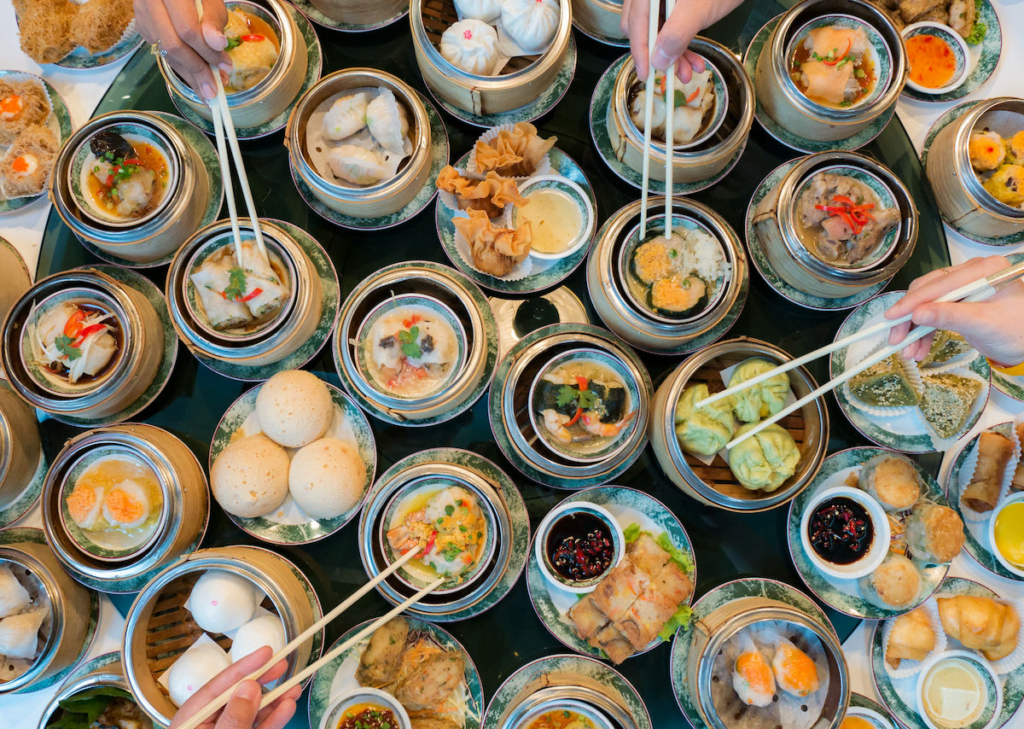
History and Background
“Dim Sum” translates to “touch the heart” in Cantonese, hinting at its origins as small delicacies that touched one’s heart. This centuries-old tradition began in the tea houses of the ancient Silk Road in Southern China. Travelers would stop to rest, drink tea, and nibble on these small dishes.
Over time, the culinary practice spread, evolving and diversifying to encompass a wide variety of dishes ranging from buns to dumplings to pastries. Today, Dim Sum is not just a dish but an integral part of Chinese culture, a culinary experience best enjoyed in the company of loved ones.
Ingredients for a Basic Dim Sum (Har Gow – Shrimp Dumplings)
Dough
- 1 cup wheat starch
- 1/2 cup tapioca starch
- 1 cup boiling water
- 2 tbsp lard or shortening
Filling
- 200g raw shrimp, peeled, deveined, and finely chopped.
- 1/4 cup finely chopped bamboo shoots
- 1 tbsp finely chopped fresh cilantro (optional)
- 1 tsp sesame oil
- 1 tsp finely chopped garlic
- 1/2 tsp salt
- 1/2 tsp sugar
- Pinch of white pepper
- 1 tsp light soy sauce
Recipe for a Basic Dim Sum (Har Gow – Shrimp Dumplings)
Preparing the Dough
- In a mixing bowl, combine the wheat starch and tapioca starch.
- Pour in the boiling water and mix it with the starches using a spatula. Once incorporated, add the lard or shortening.
- Once cool enough to handle, knead the dough until smooth. If it’s too dry, add a bit of cold water. If too sticky, sprinkle some tapioca starch. Cover the dough with a damp cloth and let it rest for 30 minutes.
Preparing the Filling
- In a mixing bowl, combine the chopped shrimp, bamboo shoots, and cilantro (if using).
- Add the garlic, sesame oil, salt, sugar, white pepper, and light soy sauce. Mix until all ingredients are well combined.
Assembling the Dim Sum
- Divide the dough into small balls, about the size of a cherry.
- Roll each ball into a flat circle, approximately 3 inches in diameter.
- Place a spoonful of the shrimp filling in the center.
- Gather the edges of the dough to create pleats, sealing the filling inside. The top should resemble a small twisted flower bud.
Cooking
- Prepare a steamer by lining it with perforated parchment paper or cabbage leaves to prevent sticking.
- Place the dumplings in the steamer, ensuring they are not touching each other.
- Steam over high heat for about 8-10 minutes. The dumplings will become translucent when ready.
Serving
- Serve immediately with soy sauce or a dipping sauce of your choice. Dim Sum is best enjoyed hot, paired with fragrant Chinese tea.
Presentation and Serving
Dim Sum dishes are typically presented in bamboo steamers, preserving their warmth and delicate flavors. They’re accompanied by various dipping sauces, such as chili oil, hoisin sauce, or a simple mix of soy sauce and rice vinegar.
Traditionally, Dim Sum is paired with tea in a custom known as “yum cha” or “drinking tea.” This ritual enhances the flavors of the dishes and aids in digestion.
Drinks Pairing
The best drink to accompany Dim Sum is, without doubt, tea. Popular choices include Jasmine, Oolong, or Pu-erh tea. The earthy, aromatic flavors of Chinese teas complement the savory and sometimes spicy flavors of the Dim Sum dishes, making the culinary experience complete.
Remember, while Har Gow is a quintessential Dim Sum dish, the world of Dim Sum is vast, with hundreds of different dishes to explore and savor.
Chinese Food – Spring Rolls
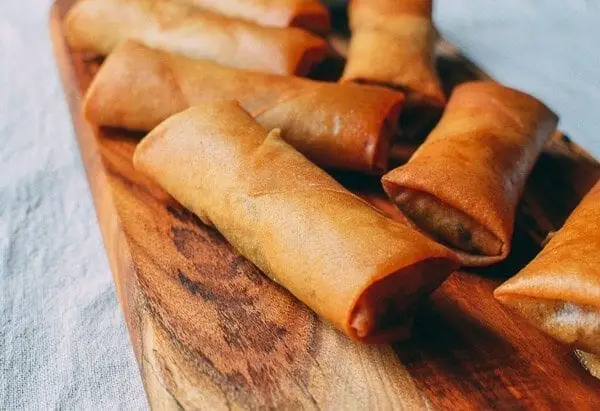
History and Background
Spring rolls have a rich history that dates back to ancient China. They were originally prepared to celebrate the arrival of spring, hence the name. These rolls were filled with the fresh produce of the season and were seen as a symbol of prosperity and a harbinger of the rejuvenation spring brings.
With time, the popularity of spring rolls spread throughout China and later to various parts of Asia, each region adapting and infusing its unique twist to the dish. Today, spring rolls are enjoyed worldwide, with countless variations in fillings and flavors.
Ingredients for Traditional Spring Rolls
Wrappers
- Store-bought spring roll wrappers or homemade
Filling
- 1 cup shredded cabbage
- 1/2 cup julienned carrots
- 1/2 cup thinly sliced bell peppers (red or green)
- 1/2 cup julienned bamboo shoots
- 1/4 cup thinly sliced scallions
- 200g minced pork or chicken (optional for a non-vegetarian variant)
- 2 cloves garlic, minced
- 1 tsp ginger, grated
- 2 tbsp soy sauce
- 1 tsp sesame oil
- Salt and white pepper to taste
- Oil for frying
Recipe for Traditional Spring Rolls
Preparing the Filling
- In a large pan or wok, heat a tablespoon of oil over medium heat. Add the minced garlic and ginger and sauté until fragrant.
- If using meat, add it now and cook until browned.
- Add the julienned carrots, sliced bell peppers, bamboo shoots, and shredded cabbage. Stir-fry for a few minutes until the vegetables are slightly tender yet retain some crunch.
- Pour in the soy sauce and sesame oil, mixing well to ensure the filling is evenly seasoned. Add salt and white pepper to taste.
- Once cooked, transfer the filling to a strainer to remove any excess liquid and set aside to cool.
Assembling the Spring Rolls
- Place a spring roll wrapper on a flat surface, positioning it like a diamond.
- Put a generous amount of filling near the bottom corner, leaving a small border.
- Fold the bottom corner over the filling, then fold in the sides and roll tightly upwards, like a cigar. Seal the top corner with a bit of water or egg wash.
- Repeat with the remaining wrappers and filling.
Frying
- In a deep frying pan, heat the oil over medium-high heat. Once hot, gently place a few spring rolls into the pan, ensuring not to overcrowd.
- Fry until they turn golden brown and crispy, which should take about 3-5 minutes.
- Remove and drain on paper towels to get rid of excess oil.
Serving
Spring rolls are best served fresh and hot. They are typically accompanied by dipping sauces, the most common being a mix of soy sauce and rice vinegar, sweet chili sauce, or plum sauce.
Drinks Pairing
A light and refreshing drink, like jasmine tea or a crisp lager, pairs wonderfully with the savory richness of spring rolls, complementing and balancing the flavors.
The beauty of spring rolls lies in their versatility. Feel free to experiment with the fillings, incorporating your favorite ingredients or adapting to the produce of the season.
Whether enjoyed as a festive treat or a casual snack, spring rolls remain a cherished gem in the treasure trove of Chinese cuisine.
Chinese Food – Dumplings
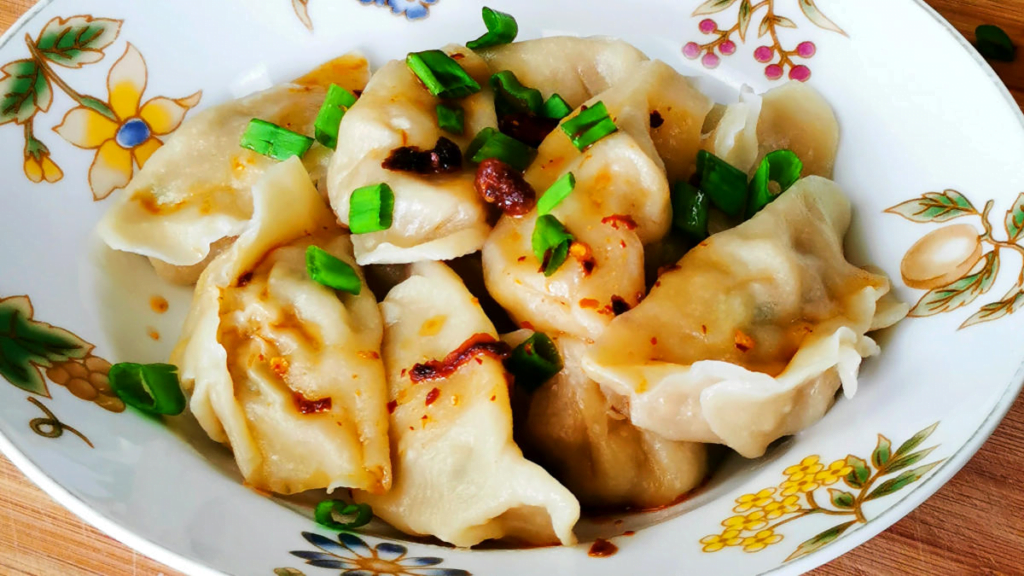
History and Background
Chinese dumplings, or “jiaozi” in Mandarin, have been a beloved staple in Chinese culture for over a millennium. Legend has it that they were first introduced during the Han Dynasty by a man named Zhang Zhongjian, a renowned physician and politician.
He crafted these delicacies to help his fellow villagers combat frostbite during a particularly harsh winter. He filled dough pockets with mutton, chili, and medicinal herbs and boiled them.
The warm, nourishing pouches were an instant hit, eventually evolving into the versatile dish we know today. Over time, regional variations developed, each bringing its unique flavors and techniques, resulting in the myriad of dumpling varieties available across China.
Ingredients for Traditional Pork and Cabbage Dumplings
Dough
- 2 cups all-purpose flour
- Approx. 1 cup cold water
- Pinch of salt
Filling
- 300g minced pork
- 1 cup Chinese cabbage (Napa cabbage), finely chopped
- 2 green onions, finely chopped
- 2 cloves garlic, minced
- 1 tsp ginger, grated
- 2 tbsp soy sauce
- 1 tbsp oyster sauce
- 1 tsp sesame oil
- Salt and pepper to taste
Recipe for Traditional Pork and Cabbage Dumplings
Preparing the Dough
- In a mixing bowl, combine the flour and salt. Gradually add water, mixing continuously until the dough begins to come together.
- Transfer to a floured surface and knead for about 10 minutes or until smooth. Cover with a damp cloth and let it rest for 30 minutes.
Preparing the Filling
- In a large bowl, combine the minced pork, chopped cabbage, green onions, minced garlic, and grated ginger.
- Add the soy sauce, oyster sauce, sesame oil, and season with salt and pepper. Mix well until all ingredients are well-incorporated.
Assembling the Dumplings
- Divide the dough into small balls, about the size of a cherry tomato.
- Roll each ball into a flat circle, approximately 3 inches in diameter.
- Place a spoonful of filling in the center of the rolled-out dough.
- Fold the dough over the filling, creating a half-moon shape. Pinch the edges to seal, and if desired, create pleats for a traditional look.
Cooking
- Boiled Dumplings: Bring a pot of water to a boil. Gently drop the dumplings into the boiling water. Stir gently to prevent sticking. Boil for about 6-8 minutes or until they float to the surface and the filling is cooked through.
- Pan-Fried Dumplings: Heat oil in a skillet over medium heat. Place the dumplings in the skillet and fry until the bottoms are golden brown. Add a few tablespoons of water and cover the skillet. Allow to steam for about 6-8 minutes or until the dough becomes translucent and the filling is cooked through.
Serving
Chinese dumplings are usually served with a dipping sauce made of soy sauce, rice vinegar, and a splash of sesame oil. For added kick, you can add some minced garlic, ginger, or chili oil.
Drinks Pairing
Dumplings pair wonderfully with green or jasmine tea, as the lightness of the tea complements the rich flavors of the dumplings. If you prefer alcohol, a light beer or crisp white wine works wonders.
Dumplings are more than just food in Chinese culture; they represent luck, prosperity, and family unity, especially during the Lunar New Year celebrations. They’re pockets of joy, bringing comfort and warmth with every bite.
Whether you’re enjoying them at a grand festive feast or a simple family dinner, dumplings remain a cherished and timeless delicacy in Chinese cuisine.
Chinese Food – Peking Duck
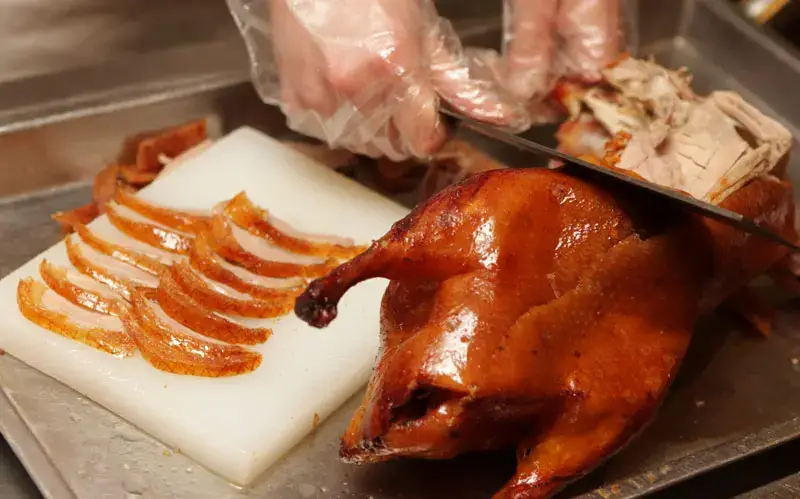
History and Background:
Peking Duck, also known as Beijing Roast Duck, is a hallmark of Chinese culinary artistry. With origins dating back to the Northern and Southern dynasties, around 420-589 AD, this dish was further refined during the Yuan Dynasty, where it was favored by the imperial court.
By the time of the Ming Dynasty, it had secured its status as a national treasure. Peking Duck is particularly associated with Beijing, previously called Peking, and has been a signature dish in the city for centuries.
Traditionally, the preparation of Peking Duck involved a lengthy and intricate process, from selecting the right breed of duck to the precise method of roasting to achieve that iconic crispy skin and tender meat.
Today, restaurants worldwide offer their interpretations of this classic, but the traditional Peking Duck remains unmatched in its taste and cultural significance.
Chinese Food – Ingredients for Peking Duck
Duck
- 1 whole duck (4-5 pounds/2-2.5 kg)
- One tbsp honey
- 1 tbsp white vinegar
- 1 cup boiling water
- Salt
Glaze
- 1/2 cup honey
- 1/2 cup water
- 3 tbsp vinegar
- 3 tbsp cornstarch, dissolved in a bit of water
To Serve
- Thinly sliced scallions
- Hoisin sauce
- Thin pancakes (store-bought or homemade)
Chinese Food – Recipe for Peking Duck
Preparing the Duck
- Begin by cleaning the duck. Remove the innards, wash the duck inside out, and then pat dry.
- Prick the duck’s skin all over using a sharp needle or pointed knife. This helps in releasing the fat and achieving a crispy skin.
- Mix honey, vinegar, and boiling water. Brush this mixture over the duck. Allow the duck to dry, preferably in front of a fan or in a cool, airy place, for about 3 hours.
Glazing the Duck
- In a saucepan, combine the ingredients for the glaze and bring to a boil. Reduce to a simmer until it thickens slightly.
- Brush the glaze all over the duck. Again, allow the duck to dry for 3-4 hours.
Roasting
- Preheat your oven to 350°F (175°C).
- Place the duck breast-side up on a rack in a roasting pan to catch the drippings. Pour about an inch of water into the bottom of the pan to prevent the fat from splattering.
- Roast the duck for about 1 hour, then flip and roast for another hour, or until the skin is crispy and a deep golden brown. Keep an eye on the water level and refill as needed.
Serving
- Once cooked, let the duck rest for a few minutes before carving. Slice the crispy skin and meat thinly.
- Serve the slices on thin pancakes, garnished with scallions and a smear of hoisin sauce. Roll up the pancake and enjoy!
Drinks Pairing
A plum wine or a traditional Chinese rice wine complements the rich flavors of the Peking Duck. If you prefer non-alcoholic beverages, jasmine or oolong tea would be an ideal choice, as they offer a light contrast to the dish’s richness.
Peking Duck is not just a dish but an experience. The crispiness of the skin combined with the tender meat and the sweet touch of hoisin sauce creates a symphony of flavors that’s hard to match. This dish embodies the essence of Chinese culinary traditions, showcasing the depth, complexity, and beauty of its cuisine.
Chinese Food – Kung Pao Chicken
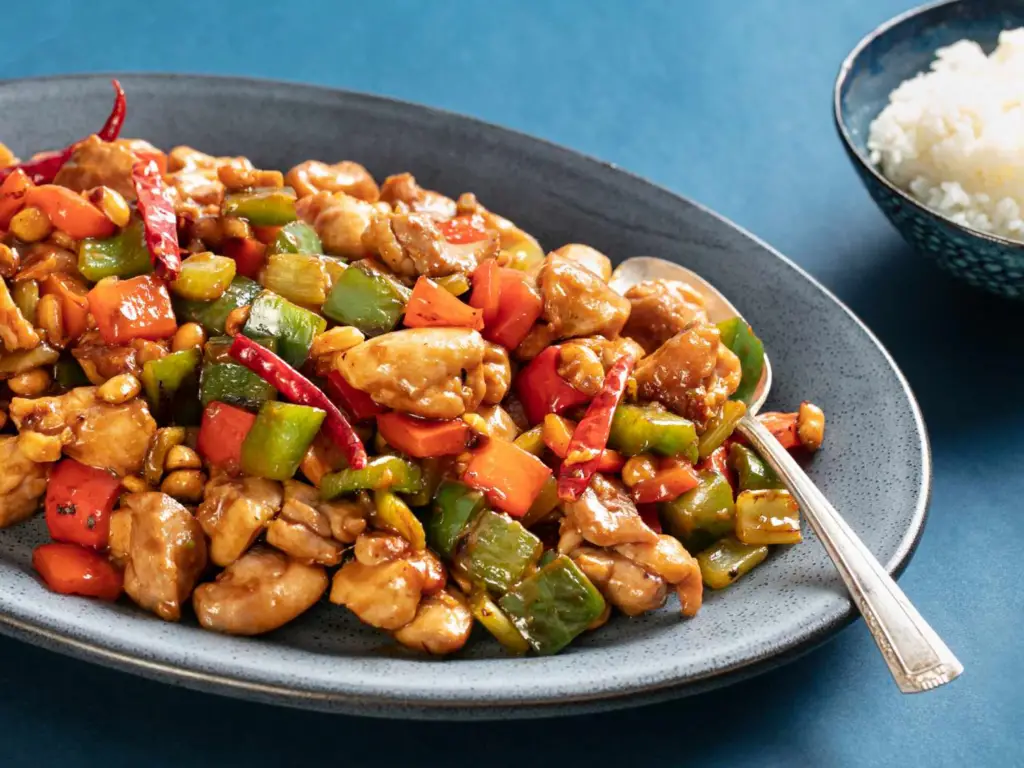
History and Background
This recipe is also known as “Gong Bao Ji Ding,” in Mandarin, is a famous Sichuan dish recognized for its bold and spicy flavors. The dish is named after a Qing Dynasty official, Ding Baozhen, who was given the title “Gong Bao” (meaning “Palace Guardian”).
Legend has it that this was his favorite dish, and after his death, it was named in his honor.
This spicy, sweet, and savory chicken dish is characterized by its shiny glaze and the distinct fiery flavor from Sichuan peppercorns. While it’s renowned in Sichuan cuisine, Kung Pao Chicken has gained immense popularity worldwide, with many variations adapting to local tastes.
Chinese Food – Ingredients for Kung Pao Chicken
Chicken and Marinade
- 500g boneless chicken breasts or thighs, cut into bite-sized pieces
- 2 tbsp light soy sauce
- 2 tbsp Shaoxing wine (or dry sherry)
- 1 tbsp cornstarch
The Sauce
- 3 tbsp light soy sauce
- 2 tbsp hoisin sauce
- 1 tbsp dark soy sauce
- 1 tbsp vinegar (preferably black or rice vinegar)
- Two tsp sugar
- 2 tsp cornstarch
- 2 tsp water
Stir-Frying
- 2 tbsp vegetable oil
- 8-10 dried red chilies, deseeded and cut into halves
- 1 tbsp Sichuan peppercorns
- 3 cloves garlic, minced
- 1 tsp ginger, minced
- 1/2 cup unsalted roasted peanuts
- 3 green onions, sliced
Chinese Food – Recipe for Kung Pao Chicken
Marinating the Chicken
- Mix the chicken pieces with light soy sauce, Shaoxing wine, and cornstarch. Let it marinate for about 20-30 minutes.
Preparing the Sauce
- In a bowl, combine all the sauce ingredients and mix well. Set aside.
Stir-Frying
- In a wok or large frying pan, heat the vegetable oil over medium heat. Add the Sichuan peppercorns and dried red chilies. Fry until fragrant.
- Add the minced garlic and ginger, and fry for a few seconds until aromatic.
- Increase the heat to high, and add the marinated chicken. Stir-fry until the chicken is cooked through.
- Pour the sauce into the wok and stir continuously until it thickens and coats the chicken.
- Add the roasted peanuts and mix well.
- Just before turning off the heat, stir in the sliced green onions.
Serving
- Serve the Kung Pao Chicken hot with steamed rice or noodles.
Drinks Pairing
With its spicy kick, Kung Pao Chicken pairs beautifully with light and refreshing drinks. A cold beer can cleanse the palate, while a Riesling, with its slight sweetness, complements the dish’s spicy and savory flavors. For non-alcoholic options, a chilled iced tea or lemonade can be a refreshing accompaniment.
Kung Pao Chicken is an embodiment of the intricate balance found in Chinese cuisine, where flavors and textures are harmoniously combined to create an unforgettable dish. Whether enjoyed in the bustling streets of Sichuan or at a home kitchen miles away, it continues to captivate taste buds with its rich history and explosive flavors.
Chinese Food – Mapo Tofu
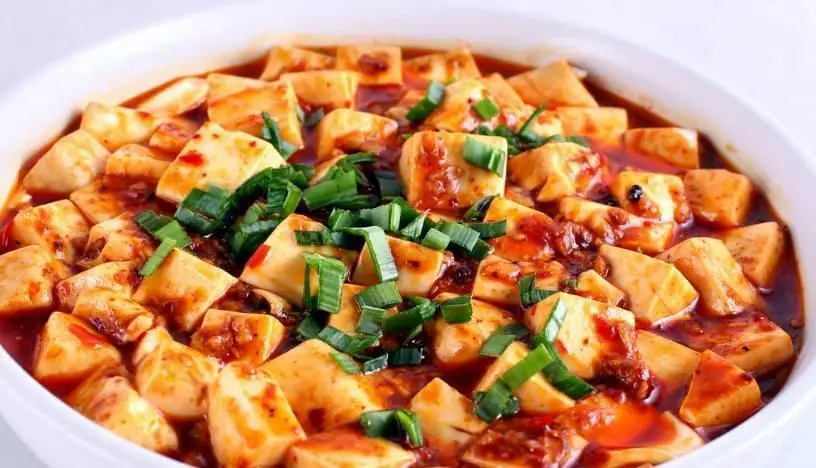
History and Background
This meal is pronounced as “Ma-Po Dou-Fu” in Mandarin, is a fiery and flavorful dish from Sichuan province, celebrated for its tingling heat and bold flavors. The dish’s name translates to “Pockmarked Old Woman’s Tofu”, a reference to the elderly lady who supposedly invented this dish.
As the legend goes, she served travelers at her inn with this spicy tofu dish, which quickly gained popularity and became a Sichuan staple.
This dish perfectly embodies the essence of Sichuan cuisine with its signature “mala” flavor, a combination of spiciness from chili peppers and the unique numbing sensation from Sichuan peppercorns.
Chinese Food – Ingredients for Mapo Tofu
Main Components
- 1 block (about 300g) of soft tofu, cut into 1-inch cubes
- 200g ground pork or beef (optional)
The Sauce
- Two tbsp chili bean paste (Doubanjiang)
- 2 tbsp fermented black beans, rinsed and mashed
- 2 tsp soy sauce
- 1 tsp dark soy sauce
- 1 tsp sugar
- 1/2 cup chicken or vegetable stock
- 2 tsp cornstarch mixed with 2 tbsp water
Stir-Frying
- 2 tbsp vegetable oil
- 1 tbsp Sichuan peppercorns, crushed
- 4 cloves garlic, minced
- 2 tsp ginger, minced.
- 2 green onions, finely sliced
- Optional: dried red chilies, to taste
Chinese Food- Recipes for Mapo Tofu
Preparing the Tofu
- Bring a pot of salted water to a gentle simmer.
- Gently slide the tofu cubes into the simmering water and let them cook for about 2-3 minutes.
- This helps in firming up the tofu and removing its raw taste.
- Drain and set aside.
Stir-Frying
- In a wok or large frying pan, heat the vegetable oil over medium heat.
- Add the crushed Sichuan peppercorns and, if using, dried red chilies.
- Fry until fragrant.
- Add the ground pork or beef and stir-fry until browned.
- Stir in the minced garlic and ginger, and cook until aromatic.
- Add the chili bean paste and mashed fermented black beans to the wok.
- Stir-fry for a couple of minutes until the oil turns red and the mixture is fragrant.
- Pour in the chicken or vegetable stock, dark soy sauce, soy sauce, and sugar.
- Bring the mixture to a boil.
- Gently add the tofu cubes into the wok.
- Let them simmer in the sauce for about 5 minutes, carefully stirring occasionally to avoid breaking the tofu.
- Slowly pour in the cornstarch slurry, stirring constantly until the sauce has thickened and coats the tofu.
Finishing Touches
- Just before turning off the heat, sprinkle the sliced green onions over the tofu.
- Gently mix and transfer to a serving dish.
Drinks Pairing
Mapo Tofu’s spiciness is best balanced with a light, refreshing drink. Consider a chilled Tsingtao beer or a crisp white wine like a Gewürztraminer. For non-alcoholic choices, cold iced tea or a lemonade can offer a soothing contrast to the dish’s fiery nature.
Mapo Tofu exemplifies the bold and electrifying flavors that Chinese cuisine offers. It’s a dish that leaves an impression not just on your palate but also in your heart, reminding you of the rich culinary tapestry that China possesses.
Whether it’s your first time trying it or it’s a regular at your dining table, Mapo Tofu never fails to delight.
Chinese Food – Red Bean Bun
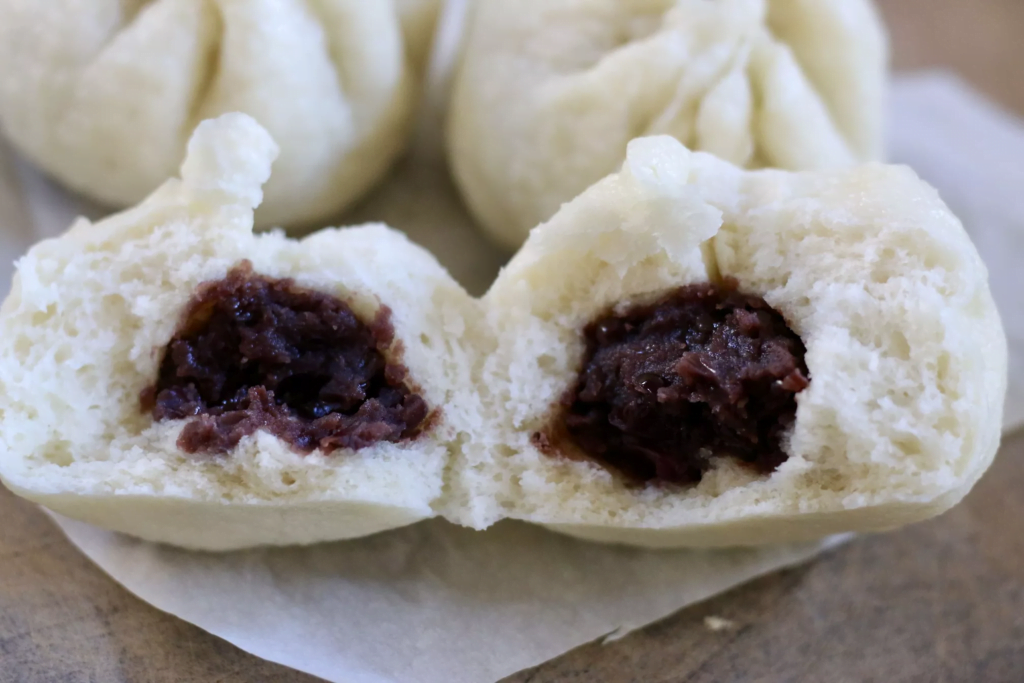
History and Background
The recipe, Red Bean Buns, known as “Dou Sha Bao” in Mandarin, are classic pastries in Chinese cuisine with a history spanning centuries. These buns, filled with sweetened red bean paste, have their roots in traditional Chinese medicine, where red beans were believed to have therapeutic properties.
As part of the transition from medicinal to culinary use, red beans became key ingredients in various desserts and pastries.
Today, Red Bean Buns can be found in bakeries and dim sum parlors throughout China and beyond, cherished by many for their sweet, smooth filling and soft, fluffy exterior.
Chinese Food – Ingredients for Red Bean Bun
The Filling
- 200g adzuki (red) beans
- 500ml water
- 150g sugar
- 1 pinch of salt
- 2 tbsp vegetable oil
Bun Dough
- 300g all-purpose flour
- 100g warm water
- 2 tsp active dry yeast
- 25g sugar
- 1 tbsp vegetable oil
- 1/4 tsp salt
Chinese Food – Recipe for Red Bean Bun
Preparing the Red Bean Filling
- Wash the adzuki beans and soak them overnight or at least 6 hours.
- Drain the beans and transfer them to a pot. Add 500ml water and bring to a boil.
- Reduce the heat to low and simmer until the beans are soft (about an hour).
- Drain the beans and mash them while still warm.
- In a pan, heat the vegetable oil.
- Add the mashed beans, sugar, and salt.
- Cook over low heat, stirring continuously until the mixture thickens and can be molded into shapes.
- Set aside to cool.
Preparing the Bun Dough
- In a bowl, dissolve sugar in warm water. Sprinkle the active dry yeast over it and let it sit for 10 minutes or until it becomes frothy.
- In a large bowl, combine the flour and salt. Add the yeast mixture and oil. Knead until a smooth dough forms.
- Cover the dough with a damp cloth and let it rise for about 1-2 hours, or until it doubles in size.
Assembling and Steaming the Buns
- Punch down the risen dough and divide it into small equal portions.
- Flatten each dough portion with your palms or a rolling pin. Place a spoonful of red bean paste in the center. Gather the edges of the dough to seal the filling inside.
- Place the buns, seam-side down, on small pieces of parchment paper.
- Let the buns rest for 20 minutes.
- In a steamer, bring water to a boil. Arrange the buns in the steamer, ensuring they are not too close together.
- Steam the buns over high heat for about 15 minutes. Remove from heat and let them sit for 5 minutes before lifting the lid.
Drinks Pairing
Red Bean Buns, with their sweet profile, pair beautifully with traditional Chinese teas like Jasmine or Oolong. The light floral or earthy notes of the tea balance the sweetness of the bun, making for a harmonious combination.
Red Bean Buns are a testament to China’s rich culinary heritage, seamlessly blending taste and tradition. Whether enjoyed as a morning treat, an afternoon snack, or a dessert after a sumptuous meal, they bring a touch of sweetness to any moment.
Chinese Food – Mango Pudding
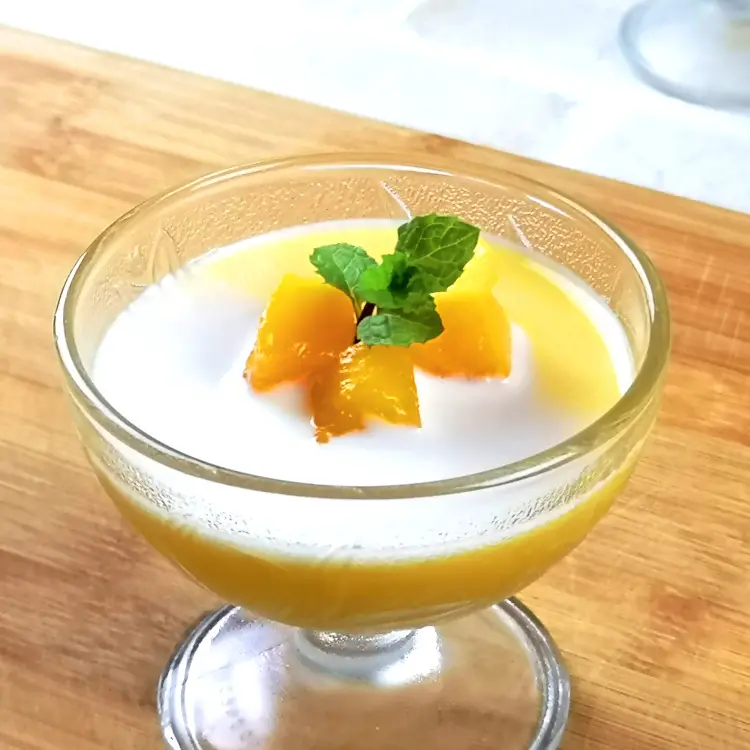
History and Background
Mango Pudding is a popular dessert in Hong Kong, often found on the menu at dim sum restaurants. Its origins are somewhat of a fusion between traditional Asian flavors and Western-style desserts. They merge the creamy textures of Western puddings with the distinct tropical flavor of mangoes popular in Southeast Asia.
Throughout the years, Mango Pudding has gained popularity not just in Hong Kong but also in many other parts of China and overseas. It is often served chilled, making it a refreshing dessert choice during warm months.
Chinese Food – Ingredients for Mango Pudding
- 2 large ripe mangoes or about 500g mango pulp
- 2 tbsp gelatin (or agar agar for a vegetarian version)
- 1/4 cup cold water
- 1/2 cup hot water
- 1/3 cup sugar (adjust based on the sweetness of the mangoes)
- 1 cup full-fat milk or coconut milk for a tropical twist
- 1/2 tsp vanilla extract (optional)
- Fresh mango cubes or evaporated milk (for garnish, optional)
Chinese Food – Recipe for Mango Pudding
Preparation of Mango Puree
- Peel and cube the ripe mangoes.
- In a blender, blend the mango cubes to a smooth puree.
- If using store-bought mango pulp, measure out the required amount.
Gelatin Mixture
- In a small bowl, sprinkle the gelatin over cold water and let it sit for about 5 minutes to soften.
- Pour hot water over the softened gelatin and stir until completely dissolved.
Combining Ingredients
- In a large mixing bowl, combine the mango puree, sugar, milk or coconut milk, and vanilla extract if using. Mix well.
- Add the dissolved gelatin mixture to the mango mixture and stir until everything is well combined.
Setting the Pudding
- Pour the mixture into individual serving molds or a large serving dish.
- Place in the refrigerator for at least 3-4 hours, or until the pudding is set and firm.
Serving the Mango Pudding
- Once set, the pudding can be served directly in the molds or unmolded onto a plate.
- Garnish with fresh mango cubes or a drizzle of evaporated milk if desired.
Serving Presentation
Mango Pudding is often served in transparent bowls or molds to showcase its vibrant golden color. Garnishing with fresh mango cubes or a light drizzle of evaporated milk not only enhances its visual appeal but also adds an extra layer of taste and texture.
Drinks Pairing:
A light jasmine tea or a chilled lychee iced tea pairs wonderfully with Mango Pudding. The delicate floral notes or sweet lychee flavor complement the rich mango taste of the pudding, making the overall experience even more delightful.
Mango Pudding, with its silky texture and bursting tropical flavor, is a testament to the harmonious blend of traditional and modern elements in Chinese cuisine. Its light and refreshing taste makes it a favored choice for rounding off a hearty meal.
Chinese Food – Tangyuan
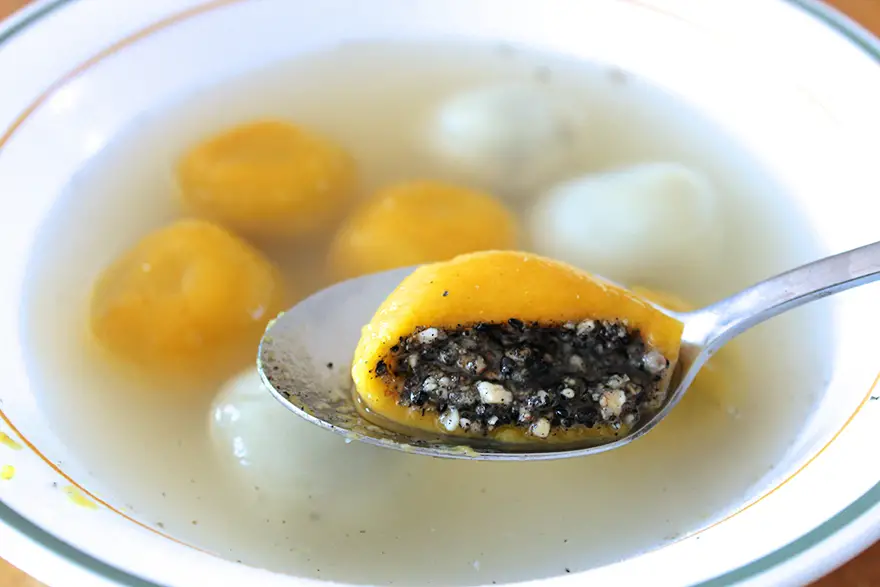
History and Background
These glutinous rice balls are a traditional Chinese dessert with profound cultural significance. Historically, Tangyuan dates back to the Song dynasty and is often linked with the Winter Solstice and Lantern festivals.
Symbolizing reunion, these delicate rice balls are typically consumed during festive periods, especially during the Lantern Festival, marking the end of the Lunar New Year celebrations. Their round shape not only represents the full moon but also the unity and closeness of families.
Over the years, variations of Tangyuan have emerged, with different fillings and even colors, but the essence remains – celebrating family, unity, and the joy of being together.
Chinese Food – Ingredients for Tangyuan
Rice Balls
- 200g glutinous rice flour
- 100-120ml water (adjust as needed)
- Food coloring (optional, if multicolored balls are desired)
Filling
- 100g black sesame seeds
- 50g sugar
- 50g unsalted butter or lard
Syrup (optional)
- 2 cups water
- 100g rock sugar or brown sugar
- A few slices of fresh ginger
- Pandan leaves (optional)
Chinese Food – Recipe for Tangyuan
The Filling
- Toast the black sesame seeds in a pan until aromatic. Allow to cool.
- Blend the cooled sesame seeds in a grinder until a fine powder forms.
- Mix the sesame powder with sugar and melted butter or lard until a paste forms.
- Shape them into small balls and set aside.
Preparing the Rice Balls
- In a bowl, gradually add water to the glutinous rice flour and knead to form a smooth dough.
- If using food coloring, divide the dough and knead in the desired colors.
- Pinch off small portions of the dough and flatten them into discs.
- Place a sesame filling ball in the center of each disc.
- Gather the edges and seal the filling inside, rolling it between your hands to form a smooth ball.
Cooking Tangyuan
- Bring a pot of water to a boil. Add the Tangyuan, ensuring they don’t crowd the pot.
- Cook until they float to the surface and then for an additional 2-3 minutes.
- Remove with a slotted spoon and set aside.
Preparing the Syrup (if desired)
- In a pot, bring water, rock sugar, ginger slices, and pandan leaves (if using) to a boil. Simmer until the sugar dissolves completely.
Serving Tangyuan
Serve the cooked Tangyuan in individual bowls. Pour the hot syrup over the rice balls.
Tangyuan is typically presented in a clear, sweet broth, highlighting the smooth and shiny surface of the rice balls. A garnish of osmanthus flowers or goji berries can add color and enhance visual appeal.
Drinks Pairing
A gentle green tea or a floral oolong pairs wonderfully with Tangyuan. The subtle tea flavors balance the richness of the sesame filling and enhance the overall dining experience.
Tangyuan is a cherished dessert in Chinese culture, symbolizing unity, togetherness, and familial love. Whether enjoyed during a festival or a simple family gathering, it reminds one of the warmth and joy of being with loved ones.
Conclusion
Chinese food is a rich tapestry of flavors, traditions, and history. Every dish, from starters to desserts, offers a unique experience. Trying these recipes at home can transport you straight to the heart of China, one bite at a time.
FAQ’s
Why is rice a staple in Chinese cuisine?
Rice grows abundantly in China, especially in the southern regions. It’s versatile and complements many dishes.
What’s the significance of the color red in Chinese food?
Red symbolizes luck, happiness, and prosperity in Chinese culture. Dishes often incorporate red ingredients during festivities.
Are fortune cookies Chinese?
No, they originated in California and are more of a Western interpretation of Chinese culture.
What is “umami”?
Umami, often described as savory, is one of the five basic tastes and is prevalent in many Chinese dishes.
How has Chinese cuisine influenced global gastronomy?
Chinese cuisine has introduced the world to unique cooking techniques, flavors, and ingredients. Many dishes have been adapted globally.
Is all Chinese food spicy?
No, only certain regional cuisines, like Sichuan, are known for their spiciness. Chinese cuisine offers a broad spectrum of flavors.
There’s More!
Thats not All!! – Check out even more Chinese Recipes Below





- 24 Chinese Beef Recipes: Culinary Marvels Unveiled in 24 Dishes!
- 39 Delicious Chinese Pork Recipes: Magic Unleashed in 39 Amazing Dishes!
- Explore 41 additional Irresistibly Delicious Chinese Dessert Recipes That Will Leave You Craving More!
- 48 Mouthwatering Chinese Vegan Food Recipes
